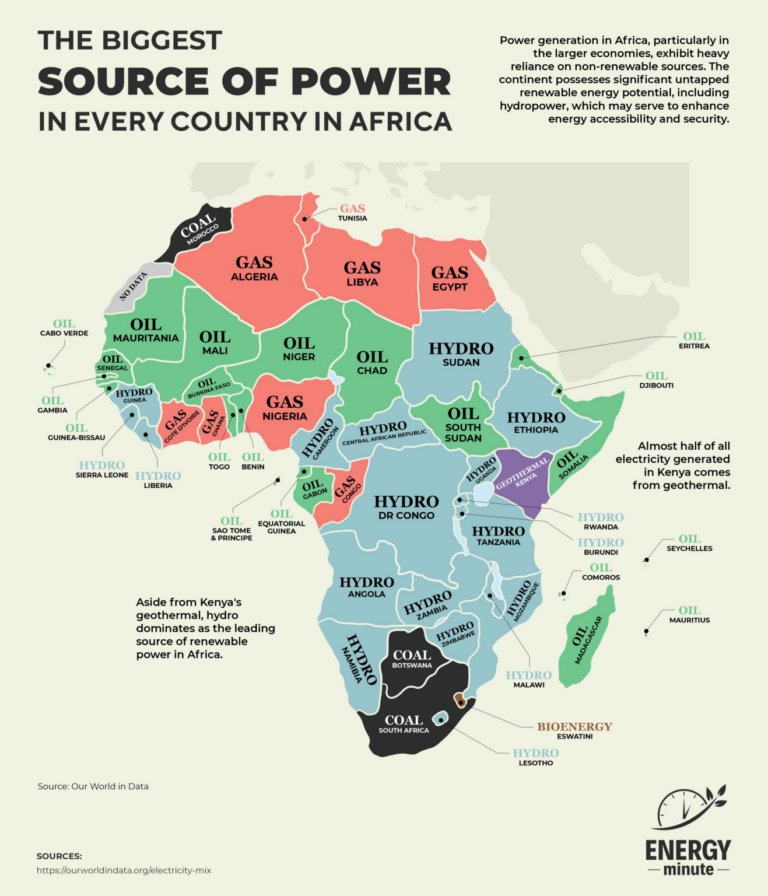ENVIRONMENT

AFRICA’S POWER DIVIDE: OIL, GAS & HYDRO DOMINATE ENERGY MIX ACROSS THE CONTINENT
Africa’s energy landscape is a tale of two realities—one dominated by fossil fuels and the other by renewables, with hydropower leading the charge in many countries. A new map visualizing the biggest sources of electricity in every African nation highlights the continent’s continued dependence on oil, gas, coal, and hydroelectricity, while also exposing vast untapped potential in renewable energy sources.
The data reveals that North and West Africa lean heavily on oil and gas, with Nigeria, Algeria, and Egypt among the biggest gas-dependent economies. Meanwhile, hydropower reigns supreme in Central and East Africa, supplying the majority of electricity in DR Congo, Ethiopia, Zambia, and Tanzania.
One standout exception is Kenya, where geothermal energy contributes nearly half of all power generation—a rare example of Africa utilizing its abundant volcanic resources. In contrast, South Africa and Botswana still rely on coal, highlighting the slow transition away from high-emission energy sources.
While hydropower emerges as Africa’s leading renewable energy source, concerns remain about climate change and erratic rainfall patterns, which could threaten dam-reliant power grids. The data suggests that while Africa’s energy mix is evolving, much of the continent remains locked in traditional fossil fuel dependence, despite the vast potential for solar, wind, and geothermal expansion.
With global conversations shifting towards clean energy investment, Africa faces a critical question: Will it embrace renewables at scale or remain tied to oil and gas for decades to come?
Stay tuned for more insights into Africa’s evolving energy sector.
"This represents a significant development in our ongoing coverage of current events."— Editorial Board









